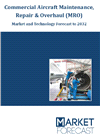Embraer (NYSE: ERJ; B3: EMBR3) and Amelia, an airline operated by the France based Regourd Aviation Group, has signed an extensive services agreement, including the Pool Program for the E-Jets family and support for the ERJ and E-Jets aircraft in the airline’s fleet. Recently, Amelia announced it is joining the E-Jets family, with two E190 jets leased from CDB Aviation.
In partnership with CDB Aviation and Embraer, the French airline aims to develop the 100-seater market and fill the 100-seat gap in its fleet, with the E-Jets perfectly sizing between the 50-seaters ERJs and larger narrowbodies. Besides the two E-190 jets, the ERJ fleet currently in service by Amelia continues in operation and supported by the Embraer Pool, as it has been since 2010.
“We are pleased to have the Regourd Aviation Group joining the E-Jets family with an extensive services agreement. The Regourd Group has been an Embraer customer since 2006, and Embraer has had major operations in France and overseas for over 40 years. We will keep working hard to provide the world-class support the Regourd Aviation Group require to keep growing”, says Carlos Naufel, President and CEO of Embraer Services & Support.

Market forecasts by MRO Type, Platform, Organisation, and Region. Country Analysis, Market and Technology Overview, Opportunities and Impact Analysis, and Leading Company Profiles
Download free sample pages More informationBesides the Pool Services contract, the Embraer team is also providing the required support for the introduction of the E-Jets fleet, including a robust entry into service process, customized publications, training for technical and operations teams, and EFB and desktop applications like ePerf, eWB, and Inflight Performance Software.
These applications allow Embraer customers to perform real-time takeoff and landing calculations from the flight deck, as well as customized weight and balance analysis for each flight, automatically generating load sheets, as well as feeding flight planning systems with the performance in all flight phases, from climb to descent, allowing the operator to perform route optimizations to save both fuel and time.